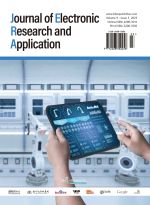Research on the Problem of Autonomous Collision Avoidance and Risk Avoidance of Ships
Abstract
This paper deeply explores the autonomous collision avoidance algorithm for intelligent ships, aiming to enhance the intelligence level and safety of ship collision avoidance by integrating navigation experience. An autonomous collision avoidance algorithm based on navigation experience is designed, a collision avoidance experience database is constructed, a quantitative model is established, and specific algorithm steps are implemented. The algorithm is verified and analyzed through simulation tests. The results show that the algorithm can effectively achieve autonomous ship collision avoidance in different scenarios, providing new ideas and methods for the development of intelligent ship collision avoidance technology.
References
Sun X, Zhang K, 2025, An Integrated Decision Support System for Ship Collision Avoidance. Journal of Transportation Safety & Security, 17(3): 272–298.
Yoshioka H, Hashimoto H, 2025, Explainable AI for Ship Collision Avoidance: Decoding Decision-making Processes and Behavioral Intentions. Applied Ocean Research, 156: 104471.
Chen S, Zhang C, Wu L, et al., 2025, Collision Avoidance Behavior Mining Model Considering Encounter Scenarios. Applied Sciences, 15(5): 2616.
Pan W, Wang Y, Xie X, et al., 2025, Ship Collision Risk Assessment Algorithm Based on the Especial Cautious Navigation Angle Model. Journal of Marine Science and Engineering, 13(1): 173.
Zhang H, Cao Y, Shan Q, et al., 2025, Collision Avoidance for Maritime Autonomous Surface Ships Based on Model Predictive Control Using Intention Data and Quaternion Ship Domain. Journal of Marine Science and Engineering, 13(1): 124.
Hedjar R, Messaoud B, 2019, An Automatic Collision Avoidance Algorithm for Multiple Marine Surface Vehicles. International Journal of Applied Mathematics and Computer Science, 29: 759–768.
Ouyang Z, Wang H, Wang J, et al., 2019, Automatic Collision Avoidance Algorithm for Unmanned Surface Vessel based on Improved Bi-RRT Algorithm. Chinese Journal of Ship Research, 14(6): 8–14.
Walambe R, Patwardhan N, Joshi V, 2020, Development of Auto-parking and Collision Avoidance Algorithms on Car Type Autonomous Mobile Robots. IFAC PapersOnLine, 53(1): 567–572.
Hedjar R, Bounkhel M, 2019, An Automatic Collision Avoidance Algorithm for Multiple Marine Surface Vehicles. International Journal of Applied Mathematics and Computer Science, 29(4): 759–768.
Cho Y, Han J, Kim J, et al., 2019, Automatic Ship Collision Avoidance Algorithm based on Probabilistic Velocity Obstacle with Consideration of COLREGs. Journal of the Society of Naval Architects of Korea, 56(1): 75–81.
Minami M, Sato K, Sawada R, 2024, Scenarios of Multiple Vessels Encounter for Safety Evaluation for Automatic Collision Avoidance Algorithm using AIS Data. Journal of Physics: Conference Series, 2867(1): 012040.
Sawada R, Sato K, Minami M, 2024, Framework of Safety Evaluation and Scenarios for Automatic Collision Avoidance Algorithm. Ocean Engineering, 300: 117506.
Kim J, Park D, 2024, Understanding of Sailing Rule based on COLREGs: Comparison of Navigator Survey and Automated Collision-avoidance Algorithm. Marine Policy, 159: 105894.
Zhu Z, Yin Y, Lyu H, 2023, Automatic Collision Avoidance Algorithm based on Route-plan-guided Artificial Potential Field Method. Ocean Engineering, 271: 113737.
Yuan C, Weng S, Shen J, et al., 2020, Research on Active Collision Avoidance Algorithm for Intelligent Vehicle based on Improved Artificial Potential Field Model. International Journal of Advanced Robotic Systems, 17.

